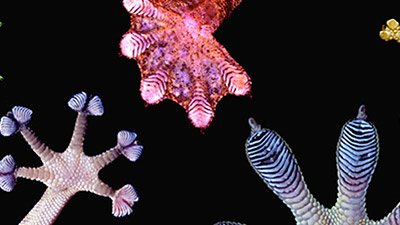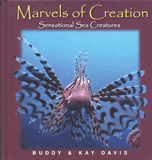
Engineers Take Cues From Fish In New Energy Turbine Design
Energy-generating turbines could take a cue from fish, according to a new study.
News Source
- LiveScience: “How Fishy Technology Could Power the Future”
Traditional turbines are most effective in powerful currents, but researchers are trying to change that so that slower currents can produce power. Today, smaller-current turbines use principles of lift to become “underwater windmills” and maximize their production. But a team led by Michael Bernitsas at the University of Michigan is looking at underwater creatures for inspiration.
Most swimming organisms propel themselves by creating small vortices in the water.
“We live in air so we are used to lifting surfaces that support birds, sail boats and airplanes," explains Bernitsas. However, most swimming organisms propel themselves by creating small vortices in the water. To emulate the behavior, Bernitsas’s team built a device called VIVACE (Vortex Induced Vibrations for Aquatic Clean Energy) that features cylinders that oscillate in moving water as turbulence builds vortices. Because of water’s high density (relative to air), the vibrations carry quite a bit of energy: up to 10 times more than the same volume with tidal turbines. Yet the VIVACE system works in currents moving only 2 miles (3 km) an hour, so slow that tidal turbines are uneconomical.
Interestingly, the team was inspired by fish scales to create a rough surface in the VIVACE cylinders, which resulted in an increase in power output of between 40 and 70 percent over a smooth cylinder. According to Bernitsas, “The roughness helps to convert more of the kinetic energy of the water into vortex energy.”
The team is also attempting to learn from the efficiency of schools of swimming fish, which share vortices to move faster. While Bernitsas’s team does not know how to combine the vortices of individual cylinders, they have experimented with “tails” that prevent each cylinder’s vortex from interfering with the others’.
While the technology may be a long way off from competing with current power-harnessing systems on a large scale, it’s nonetheless an interesting nature-inspired design—and, hence, a nod to the Creator’s ingenuity!
For More Information: Get Answers
Remember, if you see a news story that might merit some attention, let us know about it! (Note: if the story originates from the Associated Press, FOX News, MSNBC, the New York Times, or another major national media outlet, we will most likely have already heard about it.) And thanks to all of our readers who have submitted great news tips to us. If you didn’t catch all the latest News to Know, why not take a look to see what you’ve missed?
(Please note that links will take you directly to the source. Answers in Genesis is not responsible for content on the websites to which we refer. For more information, please see our Privacy Policy.)
Recommended Resources

Answers in Genesis is an apologetics ministry, dedicated to helping Christians defend their faith and proclaim the good news of Jesus Christ.
- Customer Service 800.778.3390
- © 2024 Answers in Genesis






